Gördes Rugs
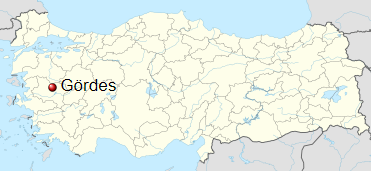
Gördes (also Romanized as Ghiordes and Yordiz) is a town and district of Manisa Province in the Aegean region of Turkey. According to the 2000 census, population of the district is 38,110 of which 10,809 live in the town of Gördes. It is an old Anatolian weaving center with two big reputations: Gördes prayer designs and Gördes knotting.
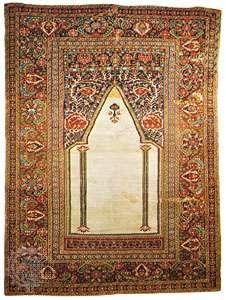
An Anatolian prayer design imitated all-over Anatolia attributed to Gördes. Such prayer rugs have a curvilinear mihrab, with columns and hanging lamps (or censers) and with panels at top and bottom of the niche (or mihrabs).

Rugs have been woven in the area of Gördes since the 18th century. In the 19th century, gordes designs were imitated vastly all-over Anatolia. Copies of Gördes rugs were woven in Kayseri, Hereke, Bandırma, and lots of other Anatolian rug centers. Prayer rugs are the most beloved pieces in Anatolia and godreses are the beloved prayer design.
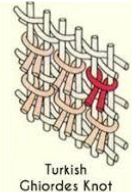
The other Gördes’ reputation is “Gördes düğümü” or “Ghiordes knot”. It is one of the two most-used knots employed in knotted-pile carpets. Also called “Turkish” or “symmetric”, in this type of knot the colored weft yarn passes over the two warp yarns, and is pulled through between them and then cut to form the pile.

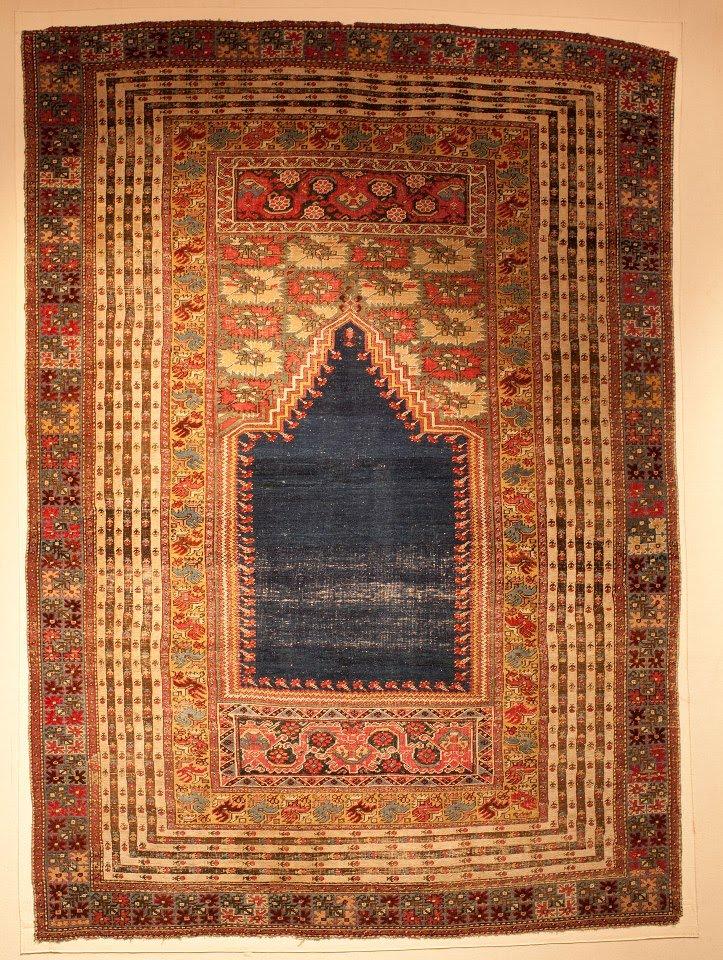
Technical aspects and the structure of Gördes Rugs
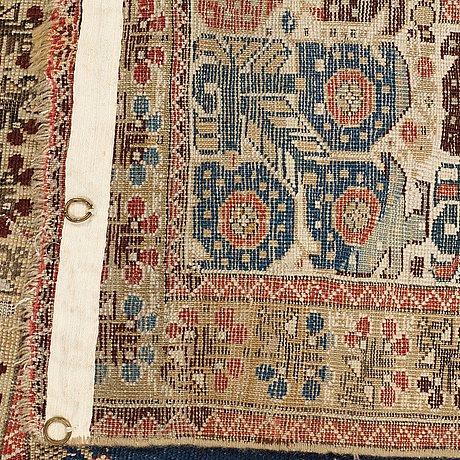
Gördes follow the common Anatolian structure of knotting which is also known as “Gördes düğümü” or “Ghiordes knot.The early prayer rugs woven with knot densities of about 100 to 200 symmetric knots per square inch.
Foundation is woolen as well as pile. Areas of white pile in Gördes carpets may be knotted in cotton. Silk pile and foundation are also possible in some antique pieces.
Dyeing and painting of Gördes Rugs
Gördes mihrabs usually colored with either Red or dark blue. In older pieces mustard mihrabs are also seen as well as beige and rarely yellows. Some little dark azure mihrabs embraced by wide orange borders.
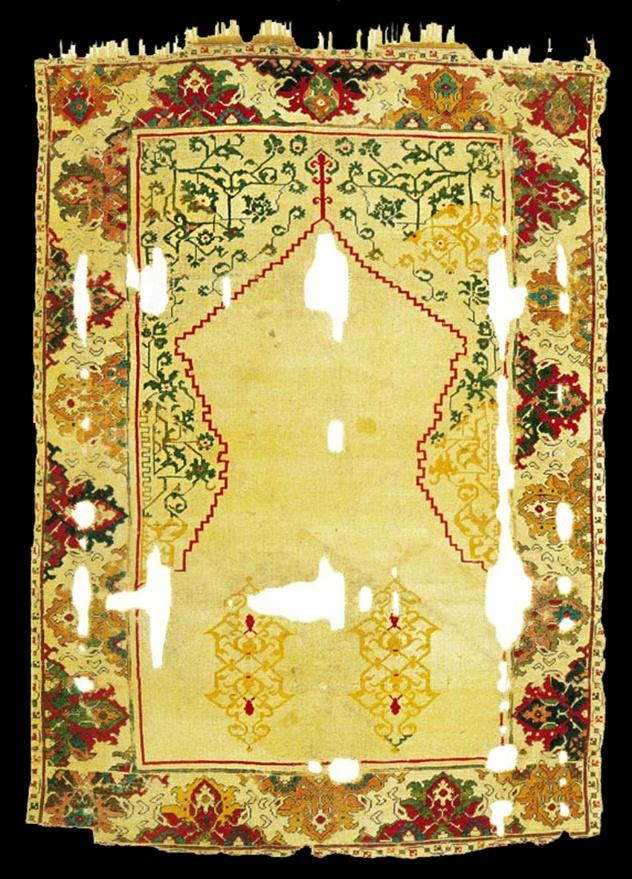
Secondary palette of Gördes frequented by beige, ivory, yellow, orange, blue, rosy, crimson, camel, light jade and grassy green.
Designs and patterns of the Gördes Rugs
Gördes prayer rugs have a curvilinear mihrab, with two or tree columns and hanging lamps and with panels at top and bottom of the mihrabs. A big tree of life may fill the under niche area.
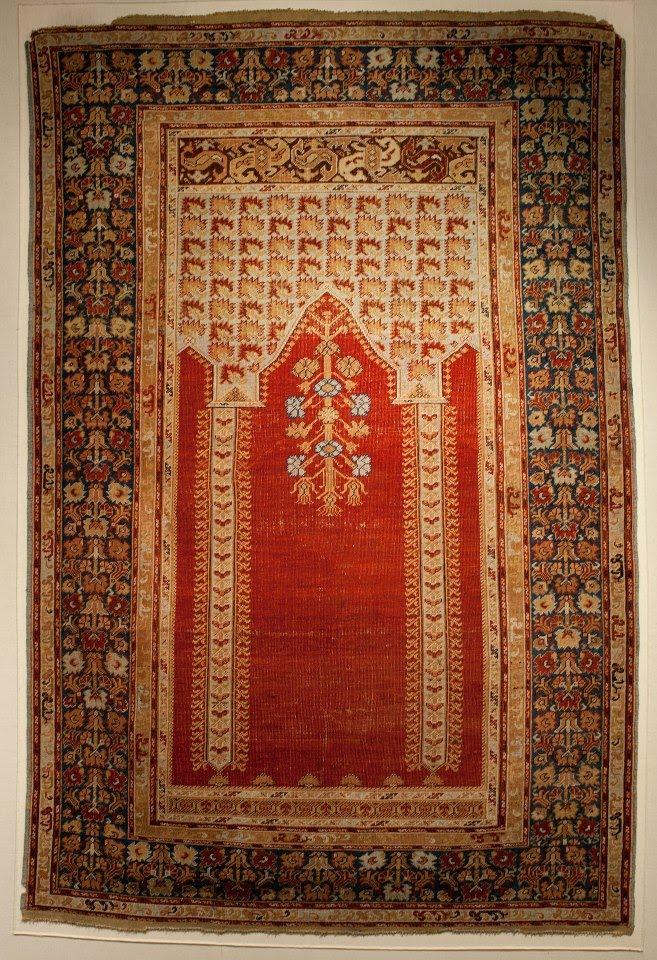
Various filling patterns used in gordes designs. From abstract tribal motifs to different stylizations of flowers and trees.
In lots of Gördes prayer rugs, the mihrab framed with wide borders filled with rather large floral patterns in European naturalistic style. These patterns were favored by the Ottoman Emperor, Sultan Abdulmecid (reigned 1839 -1861) and therefore named after him Medjid or Medjidian style.
If the prayer rug designed with double-niche structure it would be called kis-Gördes. Antique kis-Gördes made during the 19th and first decades of the 20th century.




